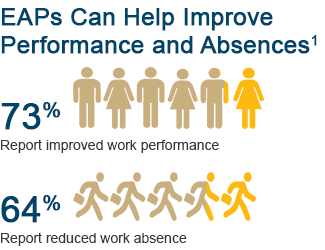The Importance of an Employee Assistance Program

Improve Employees' Well Being and Productivity!

Making your Employee Assistance Program (EAP) more vital to your employees won’t happen automatically. You have to promote the advantages, ease of use, and how your company is helping employees manage their lives better. Sounds easy, but how do you do it? Consider the following steps:
1. Designate people to champion EAP within your organization.
Hearing firsthand how helpful your EAP program is from other employees can motivate others to give it a try. Executives, colleagues, shift managers, HR professionals — anyone with a positive EAP experience can provide a compelling testimonial as to the value of your EAP program.
2. Promote awareness of the program throughout the year.
Continually sounding the bell on your EAP program is critical to driving engagement. The need for EAP services isn’t seasonal, it’s year-round, so the promotion of it should be as well.
3. Promote all the services in your EAP program.
No matter how minor a feature may appear, it could be important to someone. Be sure to turn up the volume on free professional development training, stress management, health and wellness webinars, counseling, legal and financial advice, child/elder care, and more.
4. Highlight the Work/Life resources available in your EAP program.
Emphasizing the EAP program features that support a healthy work/life balance is an excellent way to get employees interested in the program. And if they take advantage of those services, you may see a drop in employee presentism.
5. Consider your Employee Assistance Program an extension of your HR department.
Most EAP providers are not simply offering administrative services. They’re also experienced human resource consultants who can help you discover new ways to enhance productivity and save money. EAP Care Managers can also provide an extra level of ethical, legal, and clinical guidance than less experienced HR employees.



